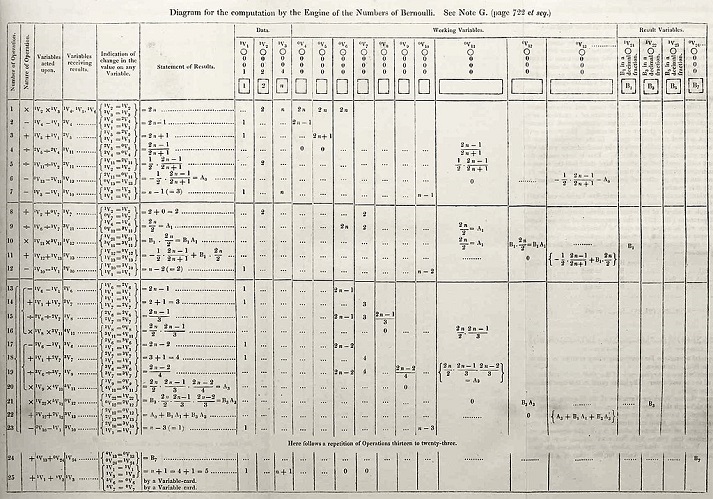Contributor: A. Castle. Lesson ID: 14342
Explore the life of Ada Lovelace, the world’s first computer programmer. Learn about her groundbreaking work, the challenges she faced, and how her vision still shapes technology today!

Imagine if the computer you’re using right now didn’t exist!
That’s where Ada Lovelace comes in. She didn’t just dream about computers – she helped make them possible!
Get ready to learn how this amazing woman paved the way for STEM (Science, Technology, Engineering, and Math) education, especially for girls.
Dive in!
Who Was Ada Lovelace? A Visionary Ahead of Her Time
|
Ada Lovelace was not just a brilliant mathematician—she was a visionary who understood the potential of machines long before they existed. Born in 1815 in England, Ada was the daughter of Lord Byron, a famous poet, and Lady Annabella Byron, a woman who was determined that her daughter would not follow her father's poetic path. Instead, Ada's mother introduced her to the world of mathematics and science, ensuring she had top-tier tutors to help develop her intellect. At a time when most girls weren't even taught basic math, Ada was learning advanced concepts. |
 |
Ada's mind was curious, and she had a deep passion for learning. As a young girl, she dreamed of flying and even started a project called Flyology, where she observed birds and studied materials that could be used to make wings.
However, her true legacy lies in her work with Charles Babbage, a mathematician who invented a machine called the Analytical Engine, which would later inspire modern computing.
Ada's Work With Charles Babbage
When Ada was 17, she met Charles Babbage, who was already known for his work on the Difference Engine, an early mechanical calculator. Ada became fascinated by his ideas, and soon, Babbage became her mentor.
In the 1840s, he worked on an even more ambitious project: the Analytical Engine. This machine was essentially the first concept of a computer, with a central processing unit (called the "mill") and memory storage (called the "store"), all powered by steam.

Babbage's engine was designed to perform complex calculations, and in 1843, Ada was asked to translate an article on the machine. But Ada didn't stop at just translating. She wrote detailed notes that ended up being three times longer than the original article!
In her notes, Ada imagined the potential for Babbage's machine beyond math. She described how the Analytical Engine could calculate not just numbers but symbols as well—and that, in theory, it could even compose music.
This was groundbreaking! Ada realized that computers could do more than perform calculations; they could follow patterns and rules to solve problems in many different fields.
Ada's Algorithm and Legacy
One of Ada's most famous contributions to computing was her design of an algorithm to calculate Bernoulli numbers using the Analytical Engine. This algorithm is considered by many to be the first computer program ever written.

Though the machine was never built in her lifetime, Ada's notes helped lay the groundwork for future scientists and engineers.
Ada's vision of a machine that could perform multiple tasks was ahead of its time. She understood that a machine could be more than a calculator — it could follow instructions (an algorithm) to solve any problem as long as it was represented with numbers or symbols.
Even though the Analytical Engine was never completed, Ada's insights are directly linked to the computers we use today. Ada's work was rediscovered over 100 years after her death, just as the world began developing the kind of computers she had envisioned.
Ada's contributions to STEM were overlooked during her lifetime, mainly because of the gender biases of the time. Historians have questioned whether she truly understood the complexities of the Analytical Engine or if Babbage's reputation overshadowed her contributions.
But as we look at her work today, it's clear that Ada Lovelace was a true pioneer in the world of technology, offering a glimpse of the future of computing long before anyone else could imagine it.
Watch the following video to see how Ada's imagination and determination impacted her contributions to science and technology.
Ada Lovelace and the Gender Gap in STEM
Ada's story is also a reminder of the challenges women in STEM fields have faced and continue to face, even today.
Throughout her life, Ada struggled against stereotypes and biases about what women could achieve in science and mathematics. Even though she was incredibly gifted, her contributions were often overshadowed by male scientists like Babbage.
Unfortunately, this pattern continues today, with many women in STEM still receiving less recognition than their male counterparts.
Despite these challenges, Ada's story is a powerful reminder of the importance of role models for young girls in STEM. Ada didn't let the limitations placed on women in her time stop her from following her passions and impacting the world.

Today, we can learn from her resilience and creativity and continue to break down barriers for girls and women in science, technology, engineering, and mathematics.
Ada Lovelace didn't just change how we think about machines—she revolutionized our perception of what computers can do.
Dive into some fun quizzes and activities in the Got It? section to see how much you remember!